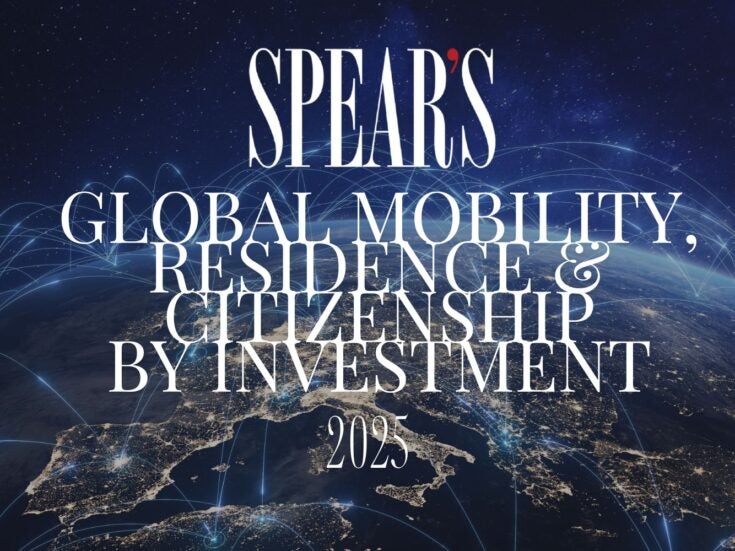
The wealth management industry has seen another merger between major firms, prompting further debate about whether big really is beautiful. By Robert Jackman
British wealth managers don’t come cheap, nor should they. In 2020, managers were overseeing £1.6 trillion for Britain’s investors, more than half the country’s GDP. Oliver Wyman, a consultancy, expects an ageing population to push an extra £800 billion their way by 2024.
Red-hot growth prospects are forcing buyers to dig deep. Royal Bank of Canada was willing to pay a 61 per cent premium to acquire Brewin Dolphin last month in a £1.6 billion all-cash deal. RBC is also buying quality. Brewin Dolphin saw a record £1 billion of inflows in the last three months of 2021, capping three of the best years in the company’s 260-year history.
Adding RBC’s £5 billion of existing UK wealth assets to the pot, the new management entity will become Britain’s third largest, with £64 billion in assets under management. But the deal is part of a wider transatlantic drift underway across the industry. In September last year, Alvarium and Tiedemann – two of the world’s most highly regarded multi-family-office firms (one in Mayfair and the other in Manhattan) – announced their plan to join forces. One industry watcher commented shortly after the news broke, it was a deal that, by its size alone, may well prove to be among the most important in UHNW wealth management history.
In many ways, the two firms were natural partners. Both began as sought-after boutique advisers before going on to carve out a sizeable share of the multi-family-office sector in their respective markets. When the merger was announced last September, each was managing more than $20 billion on behalf of their UHNW clients.
For Michael Tiedemann, who will head up the combined operation as group chief executive, the appeal of the merger is in its scale. With more than $50 billion on the new firm’s books, the former investment banker has claimed that Alvarium Tiedemann Holdings will be one of the ‘few truly independent, wealth trust and family office operations’ able not only to operate across continents and jurisdictions, but also to compete with the larger offshore banks.
His ambitions don’t stop there. In an investor presentation outlining his plans, Tiedemann predicted the new outfit would double in size over its first five years, taking total assets under management to $100 billion. Even better, he claimed, it would be done without risking either firm’s reputation for top-class service or cutting back on advisers – a promise seemingly designed to calm any jitters among existing clients.
While the mergers have clearly got wealth managers talking, not everyone is on the same page. Max Thowless-Reeves, founder of boutique firm Sorbus, tells Spear’s he has never bought into the argument that bigger is better. ‘I’m suspicious of the idea that scale means better client service,’ he says. ‘If anything, what you find when you look into these deals is that it ends up meaning the opposite’ – namely that as firms get bigger, clients become more distant from those who are meant to protect and manage their wealth.
Instead of this being a great step forward for the industry, Thowless-Reeves says the real winners from these mergers are the senior partners who get to sell their stakes. It’s this, he says, which is the biggest problem of all – one that, in his view, runs contrary to the whole family-office philosophy. ‘How can you tell families you’re looking after their long-term interests and then tell them, in the next breath, that you’ve just sold that relationship?’ he asks.
Whatever their merits, the deals aren’t unique. In 2021 alone, merger-watchers at PwC counted 296 deals across the wealth and asset management sectors, including
a number of large-scale ‘supermergers’.
Twelve months before the Tiedemann deal became public, two other transatlantic powerhouses announced a similar move, with London’s Stanhope (best known as the wealth adviser to the Queen) announcing it would be acquiring New York’s FWM Holdings (the one-time family office of the Forbes dynasty). Covering $24 billion of assets, the deal was hailed – at least at the time – as the largest merger of its kind.
The bigger sums, though, have been away from the elite end of the market, such as the union between Tilney and Smith Williamson, two of London’s largest and most established HNW firms, in 2020. The wealth management arm of the merged entity (known as Tilney Smith & Williamson) now holds $63 billion of client assets, overseen by nearly 300 investment managers across the UK, Ireland and the Channel Islands.
What is driving this rush for consolidation? For some industry watchers, it reflects shifts in the nature of wealth itself. According to Christian Edelmann, an industry analyst from Oliver Wyman, a generational transfer of wealth has upended traditional wealth management in favour of a more tech-savvy, professionalised offering. Others say the rapid internationalisation of the UHNW market – not just in the nationalities of those who hold the wealth, but also the character of their assets and interests – has made it more important for firms to be across different jurisdictions.
Then there’s that ever present factor: margins. As with the private banking sector, wealth managers have used consolidation as a way to cut costs, particularly in the face of an ever-expanding regulatory burden. Consultancy Oliver Wyman predicts that, to stay competitive, wealth managers may have to reduce their cost:income ratios by up to 12 per cent. For one industry insider, though, the sums don’t add up. ‘When have you ever seen an example of consolidation resulting in lower management costs?’ they ask. ‘It just doesn’t work that way.’
One thing that does happen – if recent examples are anything to go by – is adviser cutbacks. Tilney Smith & Williamson, for example, has wound down the latter party’s UHNW family desk. Likewise, when Cazenove acquired family office specialist Sandaire in December 2020, the firm parted company with some of the latter’s longstanding advisers.
None of this is expected to stop the consolidation train. Analysts at Boston Consulting Group predict that, as competition heats up for the growing pool of UHNW wealth, the wealth management industry will eventually be neatly divided between a small number of major all-rounders (who will control the lion’s share of the market) and niche specialists. Mid-sizers (those managing less than $20 billion) will be swallowed up or squeezed out entirely.
For all the impressive-sounding projections, others predict that the drive for expansion will be kept in check by one particularly powerful force: client satisfaction. The best wealth managers, they say, aren’t measured by how much money they’re moving around, but how well they understand and treat those who gave
it to them in the first place.
It’s an argument that finds favour with Max Thowless-Reeves, who says clients are likely to give it some time to see how the merger between Tiedemann and Alvarium works out, before some inevitably decide to move their money elsewhere. ‘At that kind of size, I suspect management will regard some losses as collateral damage,’ he says. Advisers, too, may find themselves considering their options, particularly if they find working for a larger entity stifling.
For Edelmann, the picture is more nuanced. ‘What we’re seeing is that more clients are effectively self-segmenting,’ he says. ‘You have lots of UHNW clients who are actually looking for a cheaper and more digitised solution. They might want a high-touch solution for some things – private markets, for example – and less so for others, and as a result the old model is being redesigned.’
Whether any new model will meet the needs of long standing clients – as well as their successors – remains the big question. One thing is for sure, though: it has certainly upped the stakes.
This article was originally published in Spear’s 83rd edition, and has since been edited by Chris Hawes.
Spear’s Magazine presents Spear’s 500 Live on 7 September. Find more information on NSMG.live.
Image: Shutterstock






